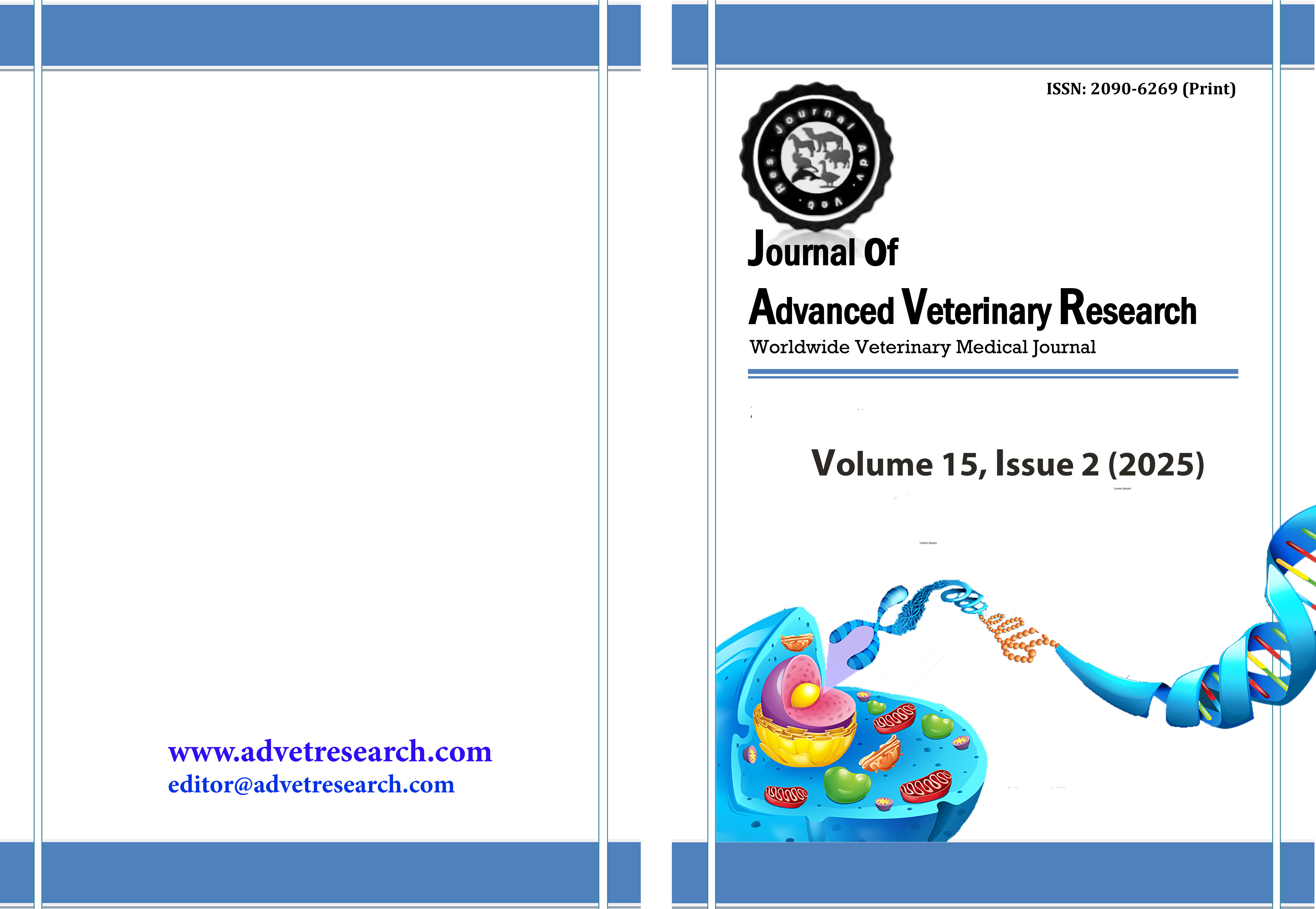Risk factors of Gram-negative bacteria infection isolated from equine ophthalmic lesions
Keywords:
Donkeys, Eyes, Horses, Infections, Epidemiology, EgyptAbstract
In this study, we conducted an epidemiological investigation of gram-negative bacteria associated with ocular lesions in equines. A total of 100 animals (86 horses and 14 donkeys) were investigated in this case-control study. Clinical and microbiological investigations were performed for each patient. Twenty-eight animals (25 horses and three donkeys) were found to have ophthalmic infections. Regarding clinical signs, horses and donkeys with ophthalmic infection had conjunctival hyperemia (n=10, 35.7%), continuous lacrimation (n=11, 39.3%), blepharospasm (n=1, 3.6%), eyelid edema in 5/28 (17.9%), mucopurulent ocular discharge (n=9, 32.1%), corneal edema (n=1, 3.6%), and corneal opacity (n=5, 17.9%). There was a significant association between Pseudomonas species and age. The highest percentage was recorded in horses aged < 5 years (n = 36, 57.1%). There was a significant association between season and the spread of ocular infection with E. coli, where 10 (76.9%) horses were infected in spring compared to three (23.1%) horses in the winter season. There was a significant association between the occurrence of mixed infections in the eyes and each season and the level of hygiene. The highest percentage of infection was recorded in winter (19, 61.3%) than in spring (12, 38.7%). However, for the level of hygiene, the highest percentage (87.1%) was recorded in horses with poor hygiene compared to those with good hygiene (12.9%). The risk factors associated with both E. coli and Pseudomonas spp. and ophthalmic infections in horses revealed a multifaceted relationship between microbial pathogens and environmental influences.
Downloads
Published
How to Cite
Issue
Section
License
Copyright (c) 2025 Journal of Advanced Veterinary Research

This work is licensed under a Creative Commons Attribution-NonCommercial-NoDerivatives 4.0 International License.
Users have the right to read, download, copy, distribute, print, search, or link to the full texts of articles under the following conditions: Creative Commons Attribution-NonCommercial-NoDerivatives 4.0 International (CC BY-NC-ND 4.0).
Attribution-NonCommercial-NoDerivs
CC BY-NC-ND
This work is licensed under a Creative Commons Attribution-NonCommercial-NoDerivatives 4.0 International (CC BY-NC-ND 4.0) license




